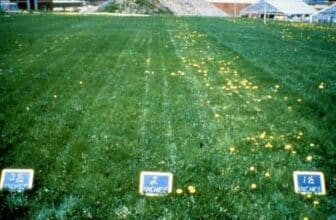Environmental Exposures and the link to Breast Cancer: Reduce Your Exposure to Outdoor Pesticides

Spring is around the corner and we welcome the revitalization of budding leaves, flowers and grass. During this time of year we also encounter exposure to toxic pesticides and weed killers which are applied for lawn and garden care and insect control.
Over the past decades, research has shown that certain garden pesticides may mimic the hormone estrogen and increase breast cancer risk. In the study, Effect of Endocrine Disruptor Pesticides, the researchers state, “Numerous other studies support the hypothesis that pesticide exposure influences the risk of breast cancer.”(1)
Since children often play outdoors on lawns, they are especially vulnerable to these exposures. Studies have shown that early life exposures may lead to chronic diseases such as breast cancer in adult life. In the study, Timing of Environmental Exposures as a Critical Element in Breast Cancer Risk, researchers conclude, “Evidence has accumulated for several chemicals that environmental factors have a stronger effect on breast cancer risk when exposure occurred early in life. The insecticide, dichlorodiphenyltrichloroethane, is an excellent example” (2).
Moreover, a recent study published in the Journal of the National Cancer Institute showed that DDT exposure before puberty may have increased breast cancer risk for women in their 50s. The Principal Investigator of the study, Barbara Cohn, states “While we’ve stopped using DDT in most parts of the world, it’s possible that other hormone-disrupting chemicals we’re putting in the environment today could show a similar risk pattern.” (3)
In order to reduce usage and exposure to toxic pesticides here are some tips:
- Mowing height matters: Have the lawn grass cut at 3-3.5 inches allowing it to shade roots and keep out weeds. In the photo provided, a Cornell University study showed that a lawn section mowed at 1-1/2 inches contained the most weeds as compared with sections that had been mowed at 2 or 2-1/2 inches.
- Leave grass clippings on the lawn which provides nutrients like nitrogen to the soil.
- For weed control on walkways and driveways, spot treat with vinegar.
- Use bio-based weed control products which may be found in several garden centers on Long Island.
- To reduce insects entering into private homes, apply diatomaceous earth (not the swimming pool grade) around the perimeter of your home. This product is least toxic and effective, but since it’s a powdery substance it is advised to keep small children and pets away from it, and to wear a mask when applying.
- Twenty five years ago there was one organic gardener on Long Island, while today there are several choices. For more information about organic gardeners visit: https://www.grassrootsinfo.org/landscapers.php
Since Sharsheret supports continuous education regarding breast cancer risk reduction and prevention, we are pleased to share tips on how to lower your risk.
Citations:
- Effect of Endocrine Disruptor Pesticides: A Review, Wissem Mnif,1,2 Aziza Ibn Hadj Hassine,1 Aicha Bouaziz,1 Aghleb Bartegi,3 Olivier Thomas,4 and Benoit Roig4: https://www.ncbi.nlm.nih.gov/pmc/articles/PMC3138025/
- https://www.ncbi.nlm.nih.gov/pmc/articles/PMC4570175/ : Timing of Environmental Exposures as a Critical Element in Breast Cancer Risk, Suzanne E. Fenton corresponding author and Linda S. Birnbaum
- https://academic.oup.com/jnci/advance-article/doi/10.1093/jnci/djy198/5299924 : DDT and Breast Cancer: Prospective Study of Induction Time and Susceptibility Windows Barbara A Cohn Piera M Cirillo Mary Beth Terry JNCI: Journal of the National Cancer Institute, djy198, https://doi.org/10.1093/jnci/djy198

